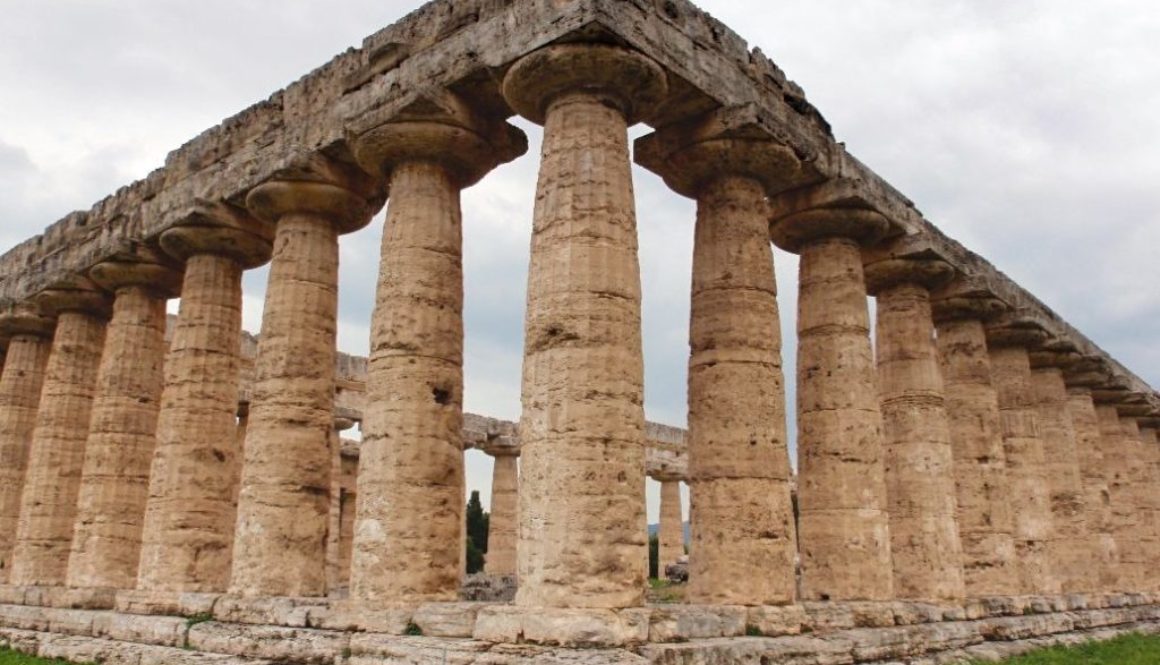Paestum, a spotlight on Magna Graecia in Italy
Paestum in Campania is an archaeological park and site that highlights the success of the early Greek colonists. Awarded World Heritage Site significance by UNESCO in 1998, Paestum has three Greek temples dating as far back as 600 BC. The temples are in an excellent state of preservation. Just over one hour by rail from Naples, they are well worth a visit.
Where is Paestum?
Paestum is part of the Cilento Peninsula in Campania and noted by UNESCO as a cultural landscape of outstanding value. There is evidence of continuous human occupation dating from 250,000 years ago.
Magna Graecia
Magna Graecia, or “Great Greece” is the named the Romans termed for the coastal areas of Southern Italy where there were Greek settlements (including Paestum). From Campania right down to Sicily, they date from the eighth century BC.
About Paestum
The city of Paestum (Roman name), or as it was known to the Greek settlers, Poseidonia is in Campania. Paestum was a major city on the Magna Graecia coast. The archaeological ruins of Paestum are significant for two reasons. Firstly, the three ancient Greek temples that date from 600 to 450 BC are among the best preserved of all of Magna Graecia. Secondly, they are home to both Greek and Roman ruins.
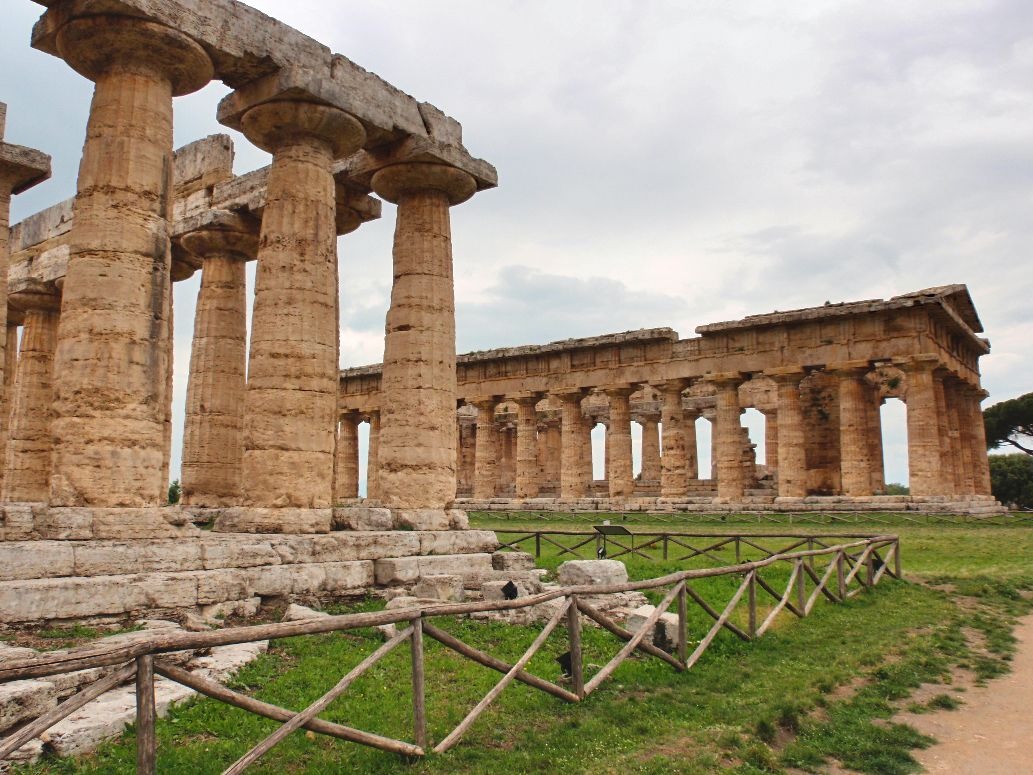
The crowds visiting are not as large as say Pompeii or Herculaneum. Therefore I felt I had them to myself. I arrived mid-afternoon and spent 2-3 hours visiting the site and museum.
Temple of Ceres
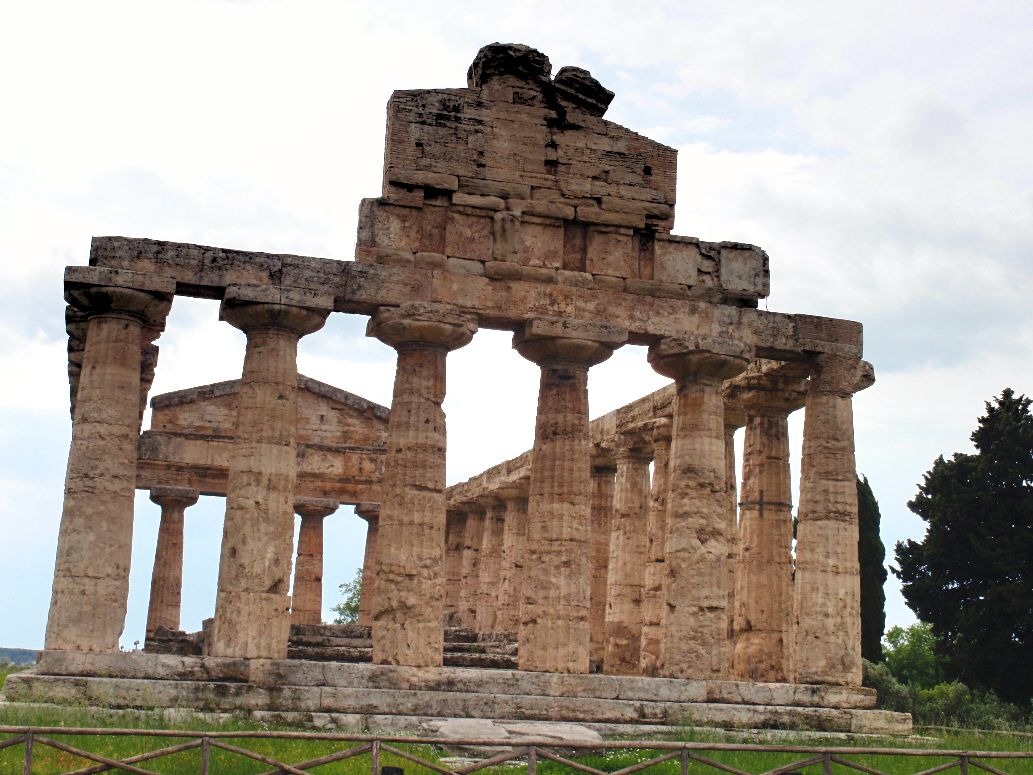
Built around 500BC, the Temple of Ceres is in the classical style and dedicated to Athena. Beneath the temple is evidence of an even older temple from the Archaic Period (c.580BC).
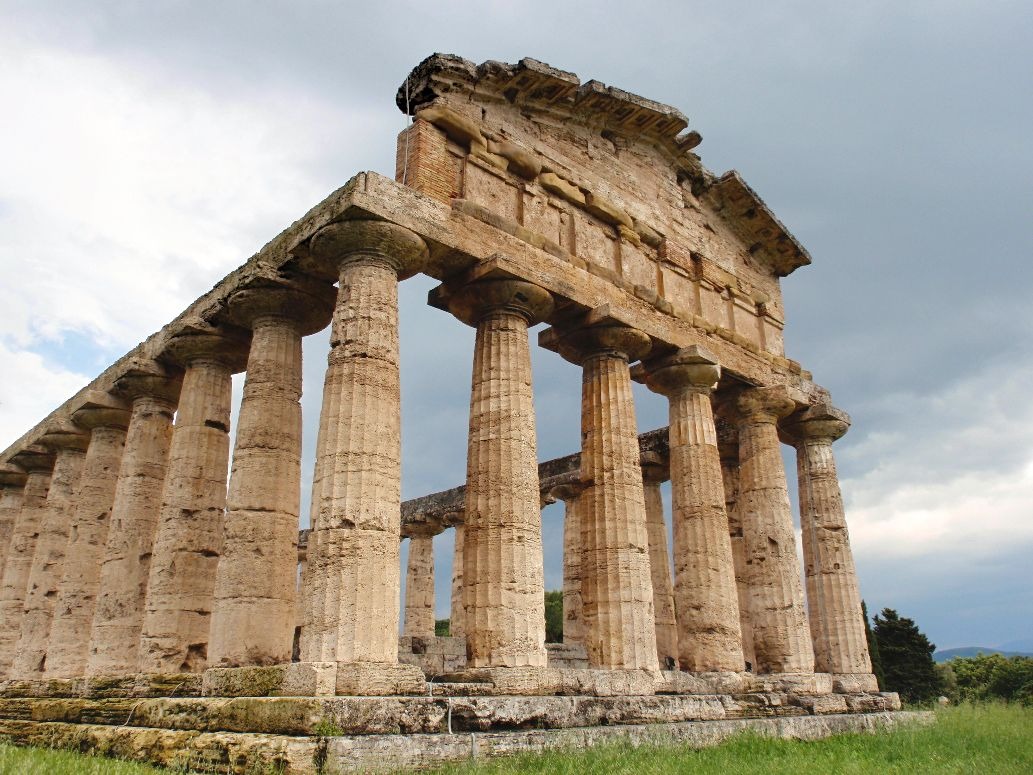
The temple comprises off six Doric columns on the short side and fourteen on the long side. There is an inscription dedicated to Minerva, the Roman goddess who mirrors Athena.
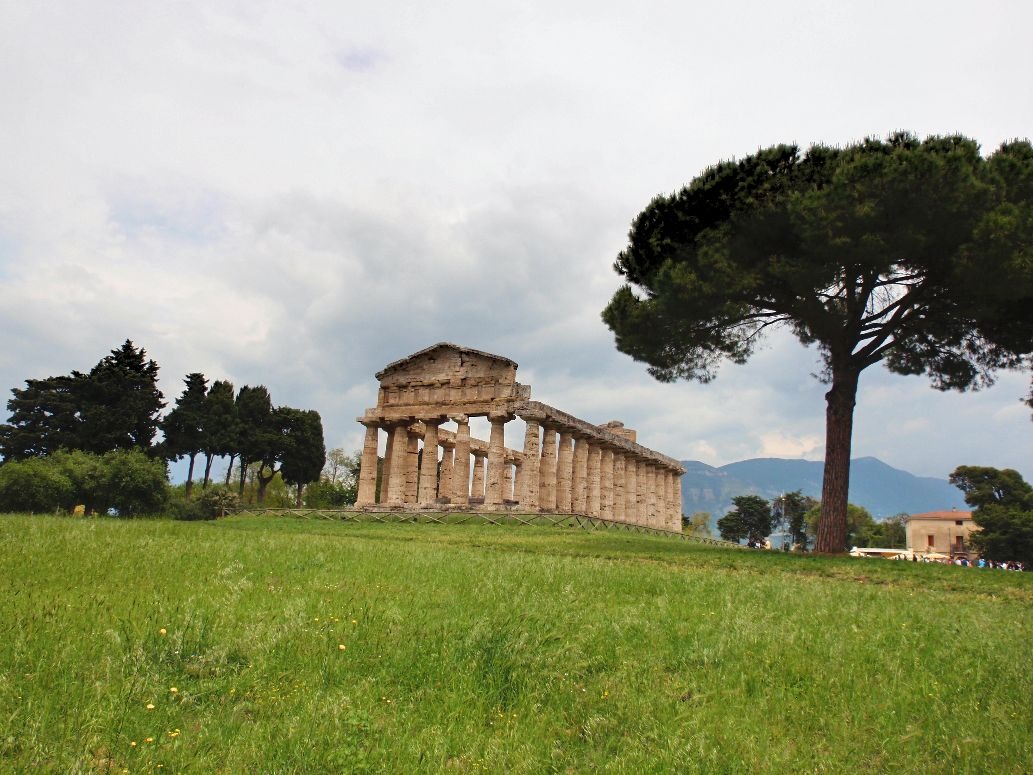
At the front of the temple are the remains of a sacrificial altar, and a votive column. The temple, following the Roman period, became a Christian church.
Temple of Neptune
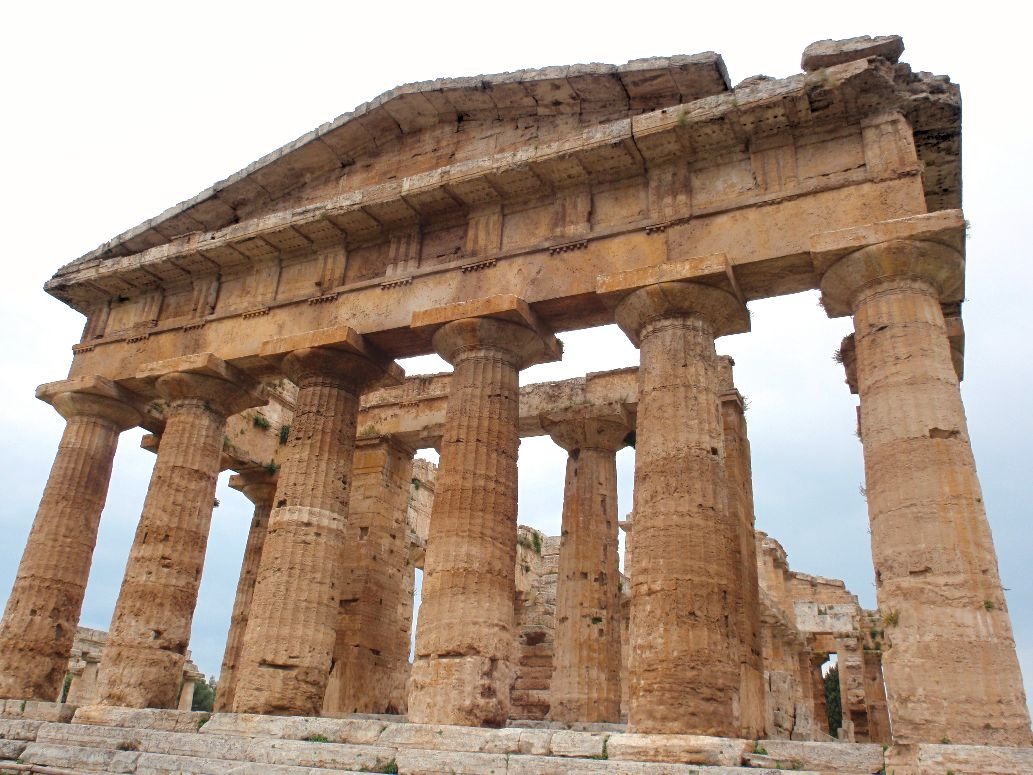
Of the three temples at Paestum, the Temple of Neptune is the best preserved. It is named Neptune as it was the most prominent temple on the site.
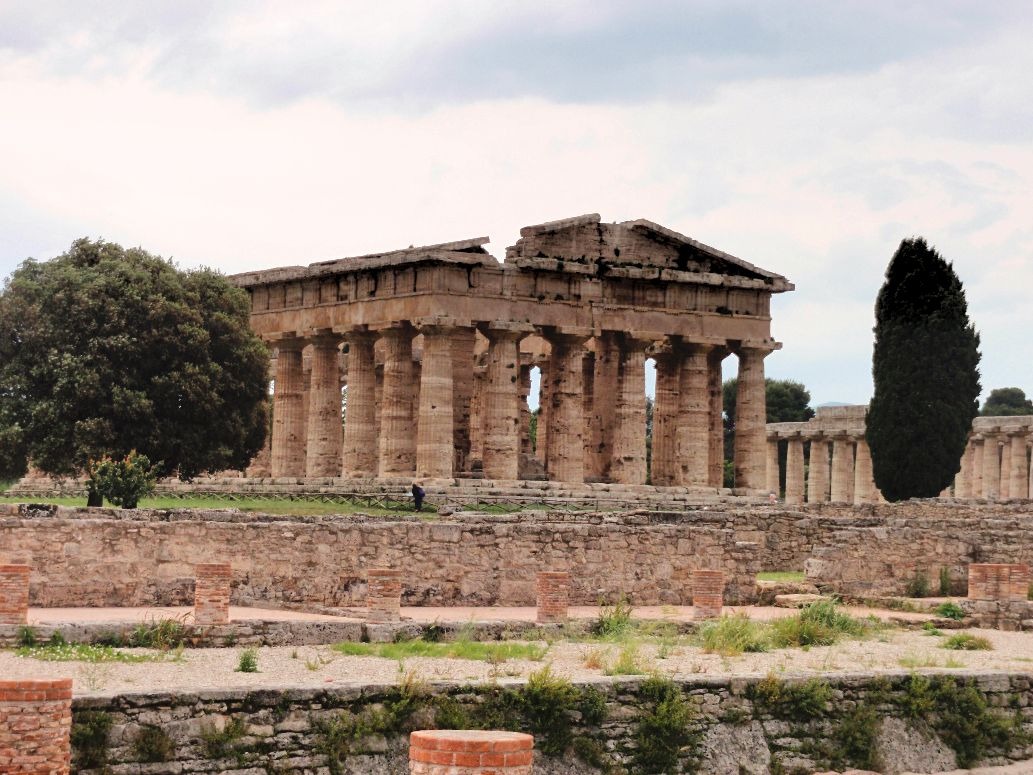
Its style is Doric from the classic period. The temple stands on a base called a crepidoma of three steps. Six columns are making up the front façade, and thirteen on the long sides.
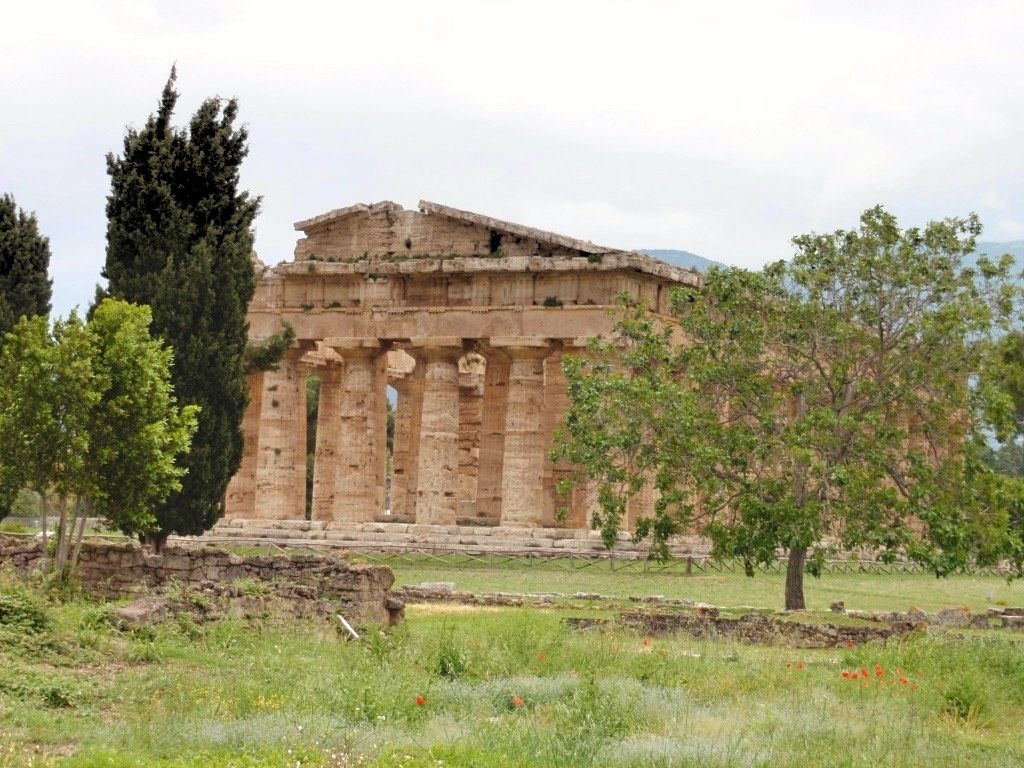
The temple is in a perfect state of preservation with all sides in ideal proportion. The temple is older than other similar classic period temples, such as in Olympia (mainland Greece) and Sicily.
Temple of Hera
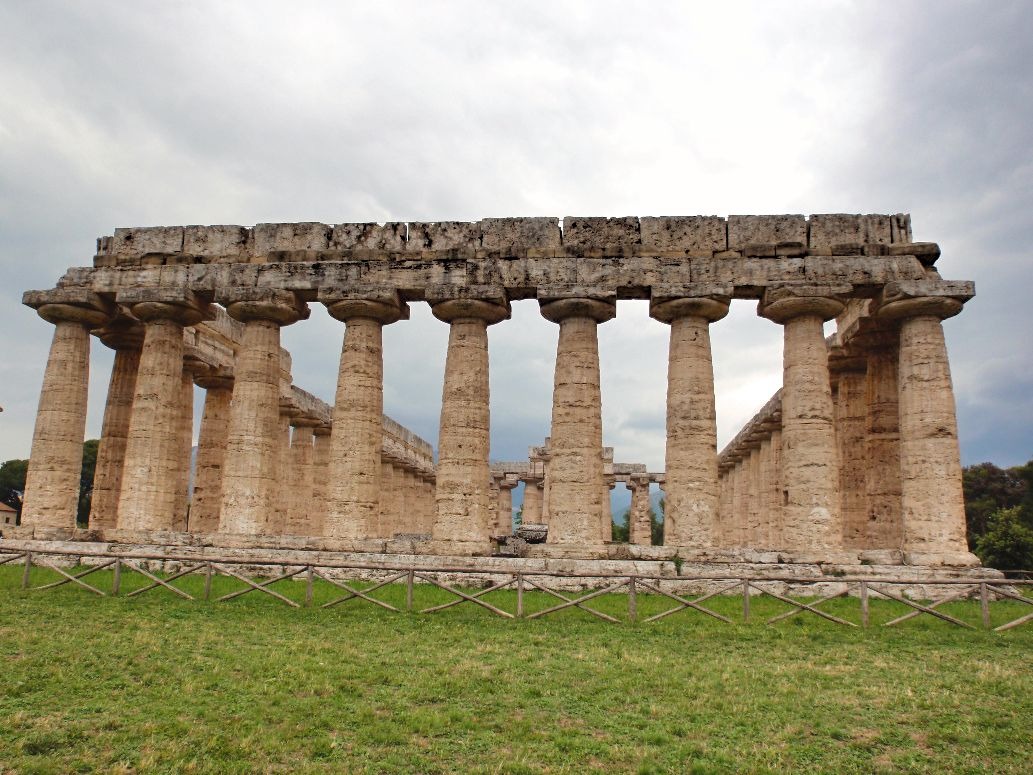
The Temple of Hera is the oldest of the three temples. Archaeologists believe the temple’s construction began in the sixth century BC. Scholars believe there may have been a dual cult attached to the temple, such as Hera and Zeus.
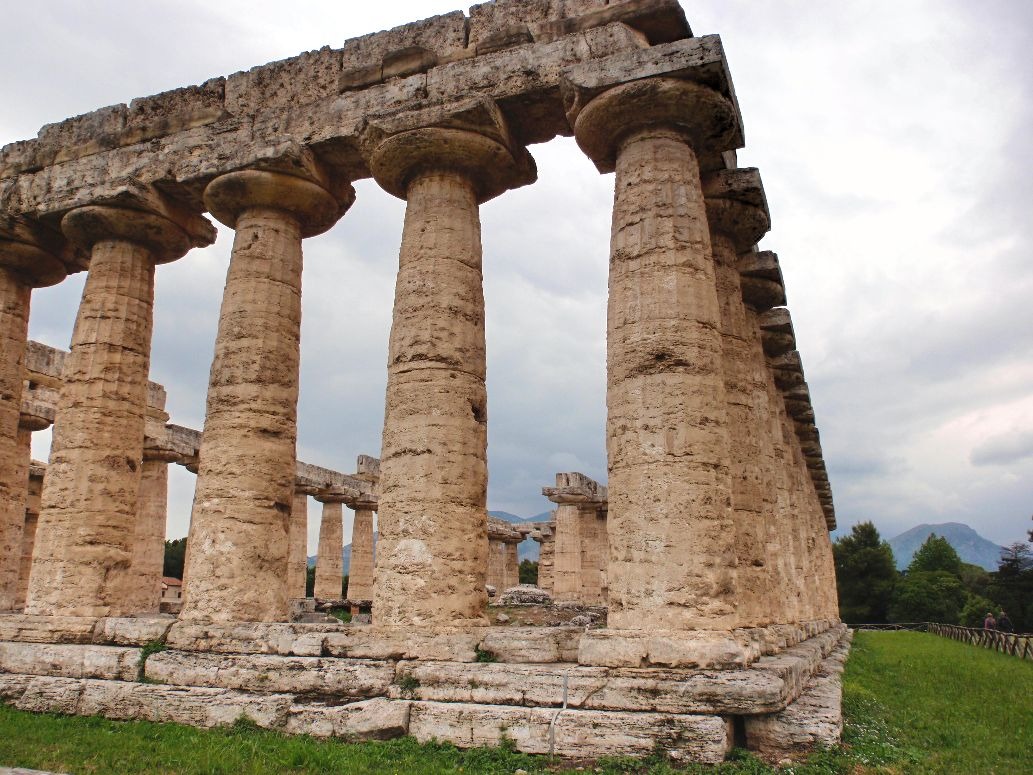
The external columns, or, peristasis has eighteen columns on the long side, and nine on the fronts. During the Roman Republic period, the roof of the temple was rebuilt and dedicated to Juna, the Roman version of Hera. The Temple of Hera was later re-named the Basilica.
Roman Ruins
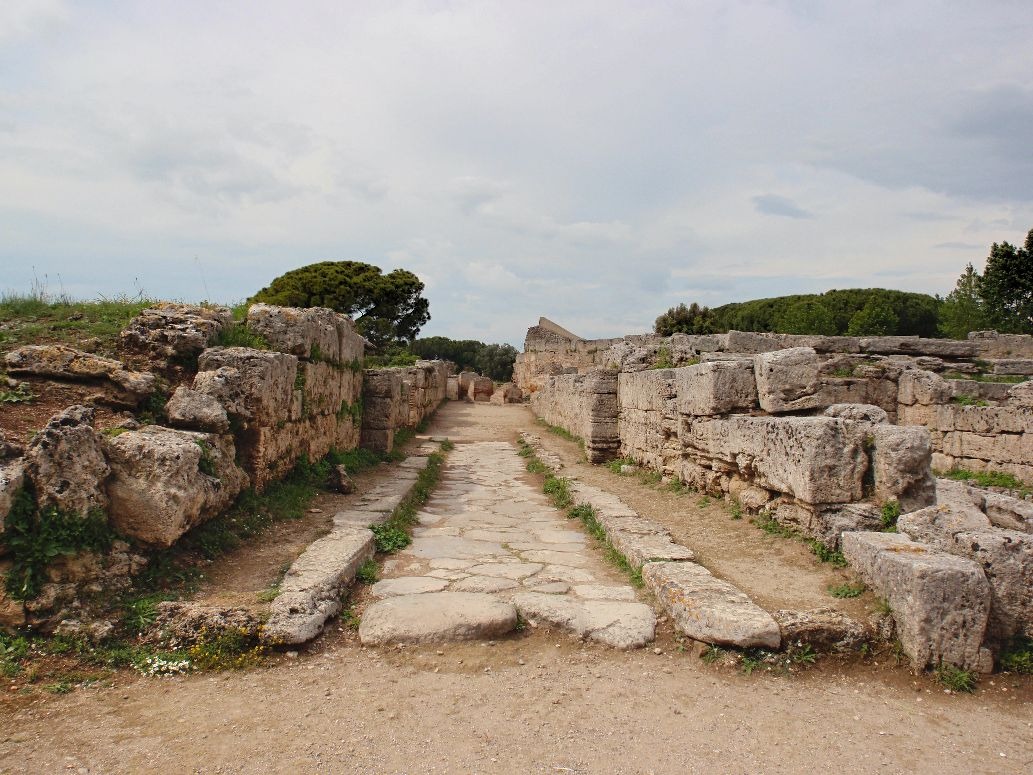
Aside from the three temples, there is evidence from the Latin and Republican periods of history. Much of these were built on top of earlier Greek buildings.
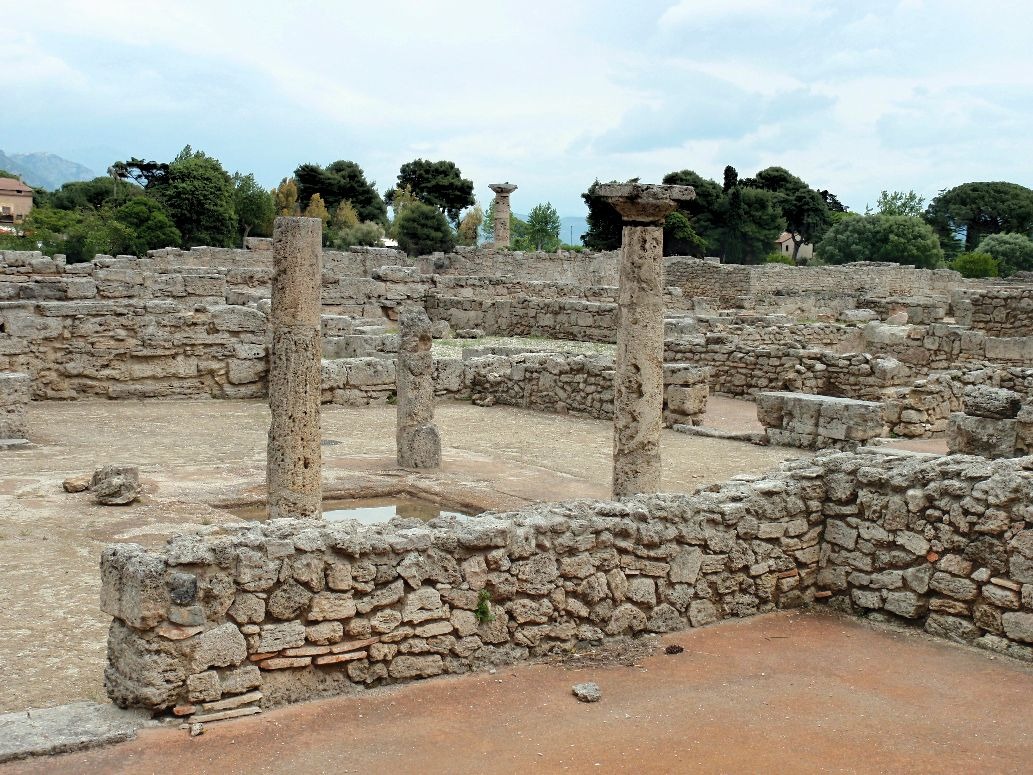
In this area, there is also a Forum from the Latin period (3rd century BC), as well as tabernae (shops). The Greek-style agora eventually transformed into Roman-style living quarters.
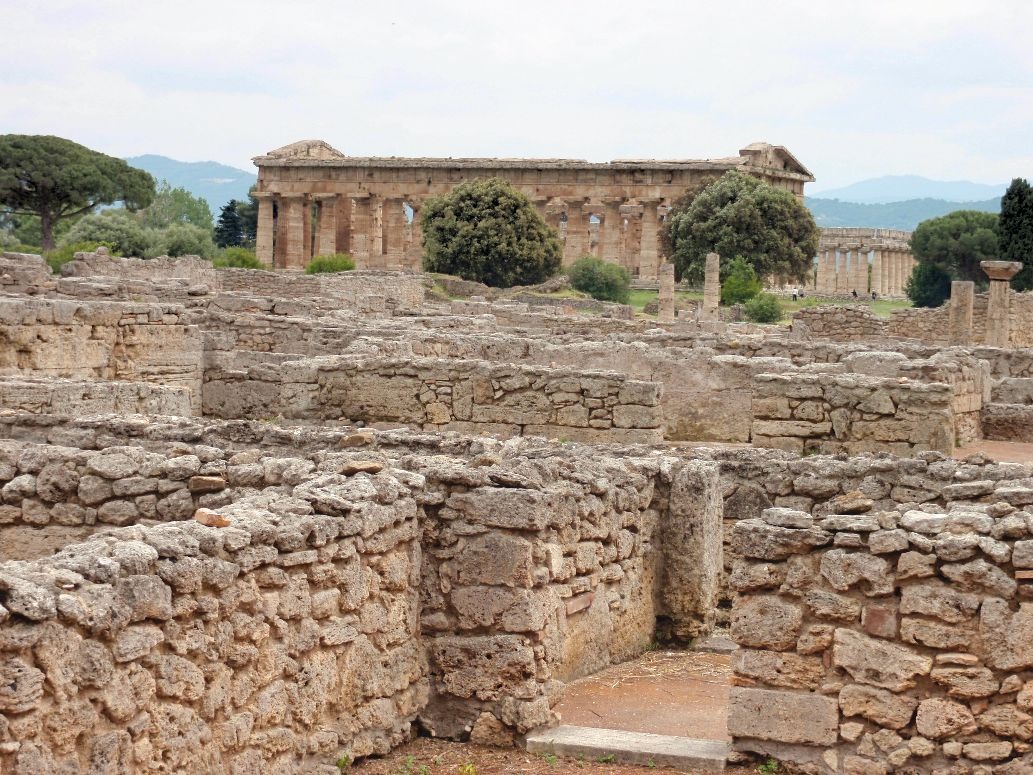
A significant building to survive from the Latin/Roman period is the Comitium.
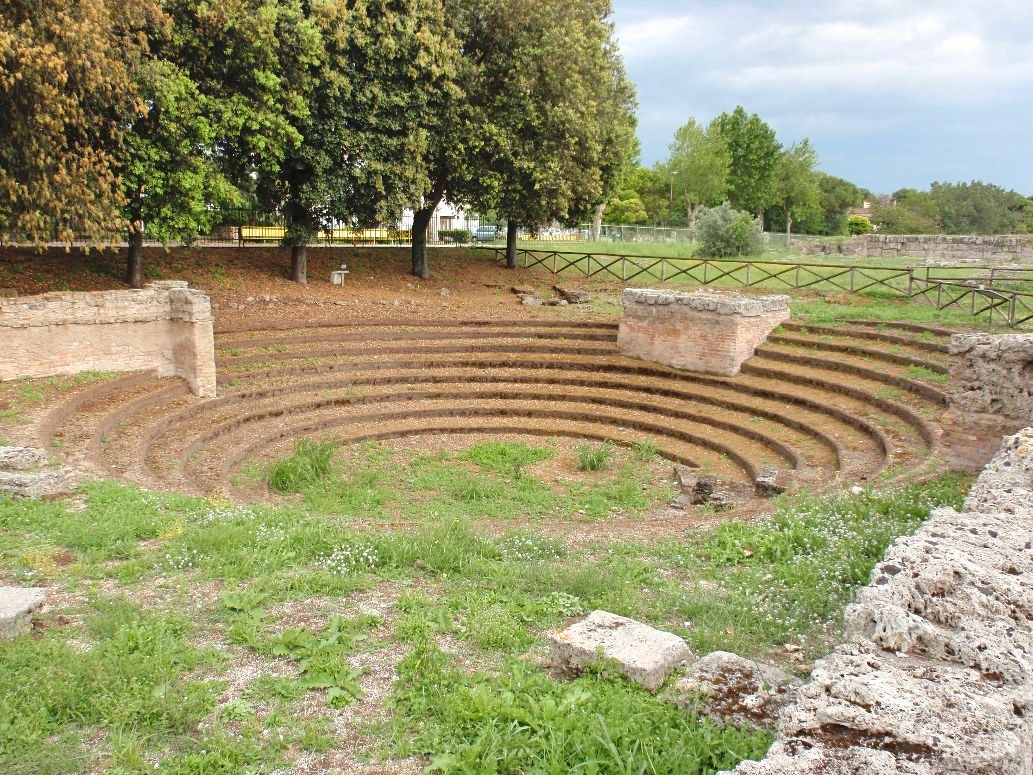
It was here in this space that elections and trials took place. The structure is circular in form, and the raised embankment supports the steps.
Accommodation
I spent the night in Paestum. I stayed at the excellent hotel/restaurant Il Granaio dei Casabella.
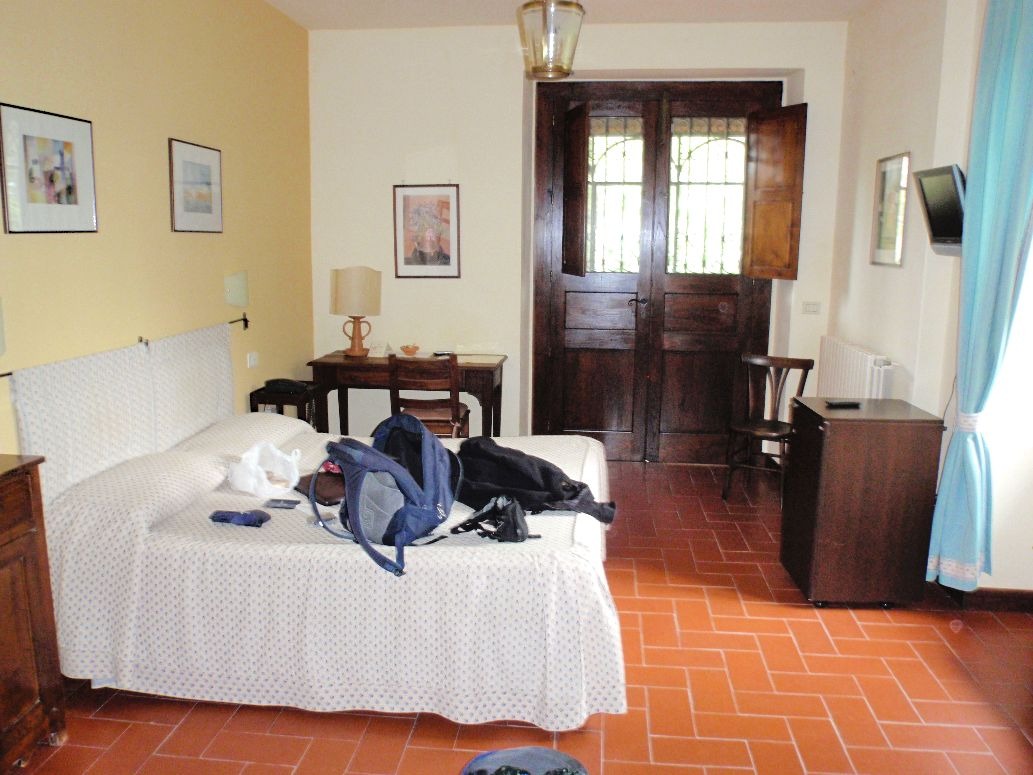
The hotel is remarkable for three reasons. Firstly, it is conveniently close to the Aurea Gate (one of 4 ancient gates into Paestum). Secondly, the restaurant serves beautiful quality meals with all ingredients sourced locally. Thirdly, they serve a great breakfast complete with homemade cakes and jams.
Visiting Info
The Paestum and Archaeological Park and Museum are open every day from 8:30 am to 19:30 every day (except Christmas Day and New Years’ Day). Opening times for the museum may vary.
Cost is 12 euro (under 18’s are free).
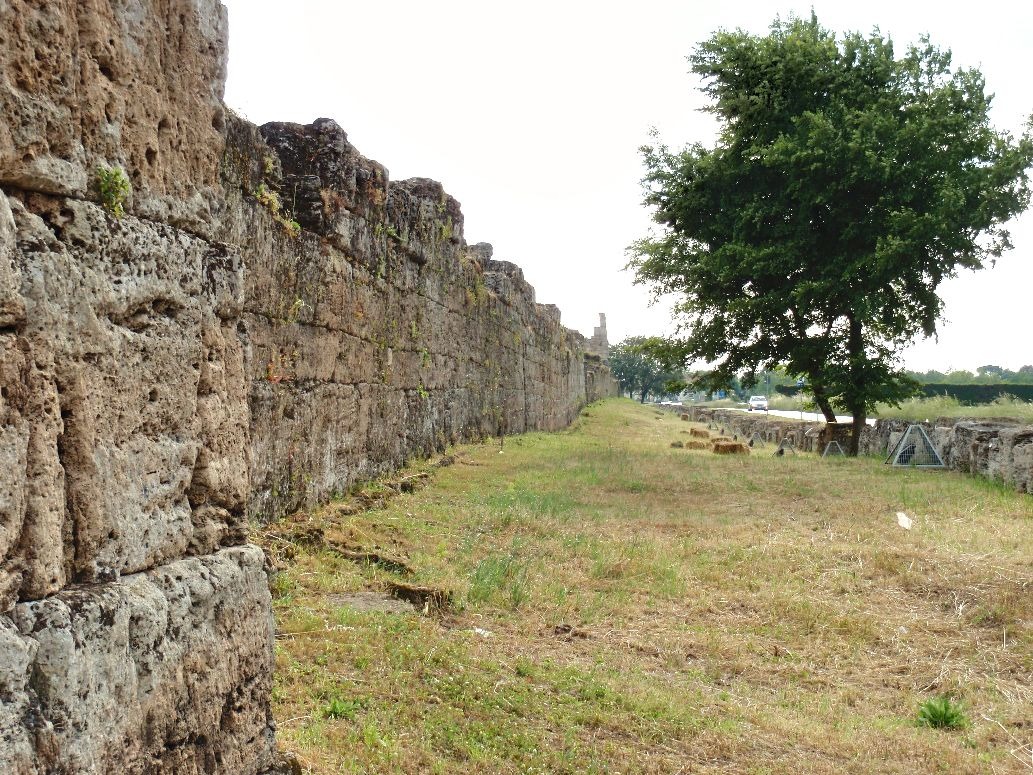
The archaeological park and museum is about a 10- minute walk from the railway station (Trenitalia).
Paestum is on the Naples to Agropoli-Castellabate line. Journey time from Naples takes 1hr 20min.
If coming from the Puglia region, change at Foggia for connecting train to Battipaglia (12 min from Paestum).

